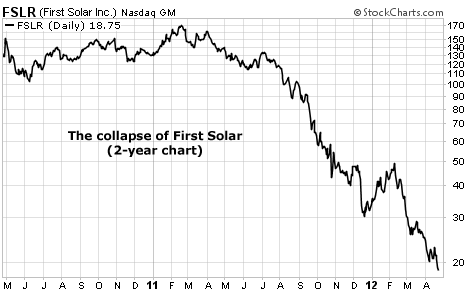| Home | About Us | Resources | Archive | Free Reports | Market Window |
The Secret to Becoming a Great Dividend-EarnerBy
Wednesday, April 25, 2012
When I sit down to select dividend-paying stocks for my readers, my personal portfolio, and my mother's portfolio, I don't just consider the "usual" numbers...
Of course, I look at important things like brand quality, profit margins, and sales growth...
But I also use a little-known, very powerful concept called the "payout ratio" to guide my decisions.
The payout ratio is the percentage of a company's earnings used to pay its dividend. My rough rule of thumb is to stick with companies with a payout ratio of less than 60%.
You see, a company with a high payout ratio – one that pays out around 75% of its earnings as dividends – may struggle to maintain its dividend if it hits a rough patch or if the economy weakens.
Utility companies tend to have higher payout ratios. Often, it's because they are mature companies with less room for growth. But even in this industry, I stay away from super-high payout ratios. They don't provide a "cushion" for tough times.
However, 60% is a great "middle-of-the-road" number for investors interested in a safe payout AND some future growth.
You see, if a company has a payout ratio of less than 60%, it's plowing 40% or more of the earnings back into the business, investing in its own growth. (A 2008 study showed 60% of the companies with a payout ratio of 60% or under raised their dividends down the road.)
To compute a company's payout ratio, I divide the annual dividends per share by the annual earnings per share. I find both numbers in the company's annual report. (For an even faster check, Yahoo Finance lists the payout ratio on its "key statistics" page.)
Here are a few of my favorite dividend-payers and their payout ratios...
As you can see, each company has a payout ratio well below 60%. They have plenty of money to both pay dividends and invest in their businesses. And earnings could theoretically fall in half before they'd have to think about cutting their dividends.
Even better, these are all companies that will grow earnings in good times and bad. And with their super-safe payout ratios, they'll pass on that growth to you no matter what.
Here's to our health, wealth, and a great retirement,
Doc Eifrig
Further Reading:
Last November, Doc shared an investing strategy that can provide even safer gains than simply owning blue-chip stocks outright... even if shares don't budge. "It's like getting paid to offer $250,000 for a house the buyer is asking $300,000 for," he writes. Learn more here: How to Make 80% a Year While Stocks Go Nowhere.
Market NotesTHIS IS WHY WE WARNED YOU ABOUT "CLEAN ENERGY" Today's chart shows why we repeatedly warn investors to avoid "clean energy" stocks. It shows the horrible bear market in First Solar (NASDAQ: FSLR).
Over the past few years, we've heaped a lot of abuse on the idea of clean energy stocks. Many novice investors are enamored with this idea... But most "clean energy" companies sport such terrible business models, we like to call them "perfectly hedged." They lose money in good economic times and bad economic times. Their share prices are able to sink in both bull and bear markets.
We typically point to the constantly terrible performance of the big "clean energy fund" (PBW) to illustrate our point. But today, we look at the market action of First Solar... a stock that was once the poster child of clean energy. It's a stock our colleague Porter Stansberry has long labeled a "disaster in waiting."
Around this time last year, First Solar traded for $160 per share. But the horrid economics of solar energy (which has a major obstacle called "night") have led to the collapse you see below. First Solar is down 88% from its April 2011 high. This is why we warned you...
 |
In The Daily Crux
Recent Articles
|


